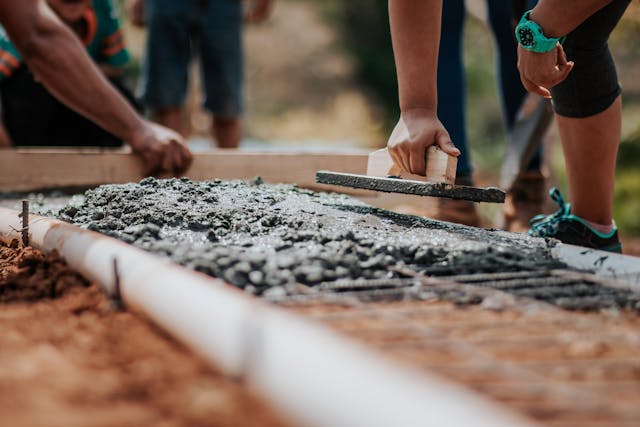Understanding Common Causes of Foundation Damage for Home
- 27 Views
- alllweekendnews
- March 20, 2024
- Business
Foundation damage can be a homeowner’s worst nightmare. It not only affects the structural integrity of your home but also diminishes its value. Identifying the causes of foundation damage is crucial in preventing costly repairs and ensuring the longevity of your property.
What are Foundation Repair Services?
Before delving into the causes of foundation damage, it’s essential to understand what foundation repair services entail. Foundation repair services encompass a range of techniques aimed at stabilizing and restoring the foundation of a building. These services address issues such as cracks, settlement, and moisture intrusion to maintain the structural integrity of a property.
Common Causes of Foundation Damage
- Soil Movement: One of the primary causes of foundation damage is soil movement. Expansive soils, commonly found in areas with high clay content, swell when moist and shrink when dry. This constant expansion and contraction exert pressure on the foundation, leading to cracks and instability.
- Poor Drainage: Inadequate drainage around the perimeter of your home can contribute to foundation damage. When water accumulates near the foundation, it seeps into the soil, causing it to expand and exert pressure on the foundation walls. Over time, this hydrostatic pressure can lead to cracks and structural issues.
- Tree Roots: While trees offer shade and aesthetic appeal, their roots can wreak havoc on your home’s foundation. As tree roots grow, they seek out sources of water, including the moisture present in the soil around your foundation. As they absorb moisture, tree roots can cause soil shrinkage and destabilize the foundation.
- Poor Construction: Faulty construction practices can also contribute to foundation damage. Improper site preparation, inadequate soil compaction, and substandard materials can compromise the stability of the foundation, leading to issues such as settlement and cracking.
- Extreme Weather Conditions: Harsh weather conditions, such as droughts, floods, and temperature fluctuations, can take a toll on your home’s foundation. Prolonged droughts can cause the soil to dry out and shrink, while heavy rainfall can saturate the soil and exert pressure on the foundation walls. Similarly, freeze-thaw cycles can cause soil expansion and contraction, leading to foundation movement.
Importance of Timely Repairs
Ignoring signs of foundation damage not only risks compromising the structural integrity of your home but also poses safety hazards to you and your family. For instance, cracks in the walls can widen over time, allowing moisture to seep in and create an environment conducive to mold growth, which can lead to respiratory issues.
Additionally, uneven floors and sticking doors or windows may indicate significant shifts in the foundation, potentially resulting in doors and windows becoming difficult to open or close properly, compromising security and energy efficiency. Therefore, taking swift action to address any signs of foundation damage can mitigate these risks and ensure the long-term stability and safety of your home.
Tips for Preventing Foundation Damage
- Maintain Proper Drainage: Ensure that your gutters and downspouts are clear and functioning properly to prevent water from accumulating near the foundation.
- Monitor Tree Placement: Be mindful of where you plant trees and shrubs on your property, keeping them away from the foundation to prevent root intrusion.
- Regular Inspections: Conduct regular inspections of your home’s foundation, looking for signs of cracks, settlement, or other issues that may indicate foundation damage.
- Address Moisture Issues: Keep the soil around your foundation properly hydrated to prevent soil shrinkage and mitigate the risk of foundation movement.
- Consult Professionals: If you notice any signs of foundation damage, consult with reputable foundation repair services to assess the situation and recommend appropriate solutions.
Conclusion
Understanding the common causes of foundation damage is the first step in safeguarding your home against structural issues. You can protect your home’s foundation and ensure its longevity by addressing soil movement, poor drainage, tree roots, poor construction, and extreme weather conditions. Remember, timely repairs and regular maintenance are key to preserving the structural integrity of your property. If you suspect foundation damage, don’t hesitate to contact reputable foundation repair services to assess the situation and recommend appropriate solutions.
In conclusion, being aware of the factors that contribute to foundation damage and taking proactive measures to address them can save you time, money, and stress in the long run. Prioritizing regular maintenance and addressing any issues promptly can help preserve the structural integrity of your home and ensure its stability for years to come.
William A seasoned educator and programming enthusiast, William specializes in offering top-notch <a href="https://www.programmingassignmenthelp.uk/">Programming Assignment Help UK</a> services. With 5 years of experience and a passion for guiding students, he ensures every learner achieves academic excellence in their coding journey.
